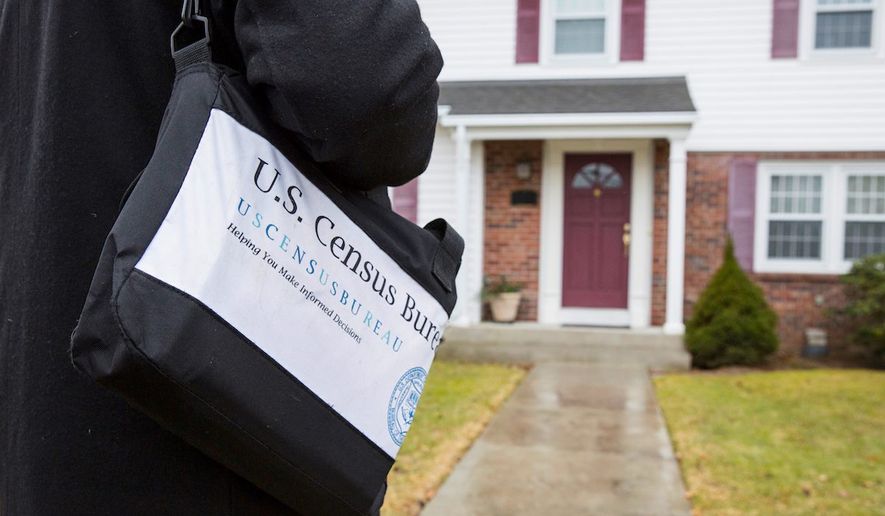The U.S. population is growing.
“Census Bureau population estimates as of January 1, 2019, found the U.S. population to be 328,231,337 which is up 6.31 percent since the 2010 Census on April 1, 2010,” the federal agency reported Monday.
Texas had the greatest increase in population in the past decade with 3.6 million new residents, followed by Florida (2.5 million), California (2.3 million) and North Carolina (a distant fourth place with 847,884).
Now comes the task of counting them all.
The census has come under the close scrutiny of President Trump, who pines for a citizenship question to be included on the next census. The nine-word question would ask “Is this person a citizen of the United States?” — and Mr. Trump feels that the census itself would be “meaningless” without that simple inquiry. Grassroots groups have pushed back plenty, claiming the question is discriminatory and would intimidate the “immigrant community” and possibly compromise the final tally.
After lower court rulings against the question, the Supreme Court will hear begin hearing arguments on the case beginning April 23, with a decision handed down by the end of June.
The census must go on, though. The gargantuan effort begins on April 1, 2020, and includes a new write-in portion to specify race, along with a household relationship question for couples to specify whether they are different-sex or same-sex. Paper census forms are available in a dozen languages, printed guides in 59 languages.
“We go to extraordinary lengths to ensure we count everyone once, only once, and in the right place. We know that the 2020 Census is important to every community,” said Census Bureau Director Steven Dillingham.
The bureau itself is hiring thousands of census takers and other staffers — all required to be U.S. citizens and speak English.
• Jennifer Harper can be reached at jharper@washingtontimes.com.




Please read our comment policy before commenting.